Welcome to an in-depth tactical analysis of PSV Eindhoven under the guidance of Peter Bosz. In this article, we delve into the strategic intricacies and tactical nuances employed by Bosz to shape the playing style of PSV Eindhoven. Bosz’s coaching philosophy emphasizes attacking football with fluid positional interchange and high pressing, making PSV Eindhoven an exciting team. Join us as we dissect the tactical framework, formations, and player roles that define Bosz’s approach, offering insights into how his strategies have influenced the team’s performance in domestic and European competitions.
Build-up
Low Build-up
In the low build-up, Peter Bosz sets his team up in a 1-4-3-3 formation, with one number six and two number eights.
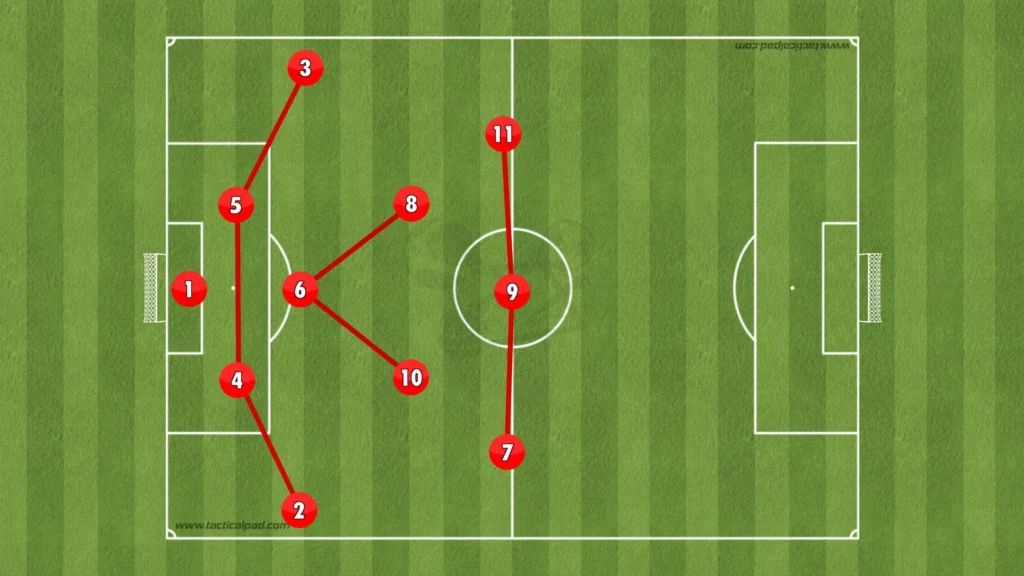
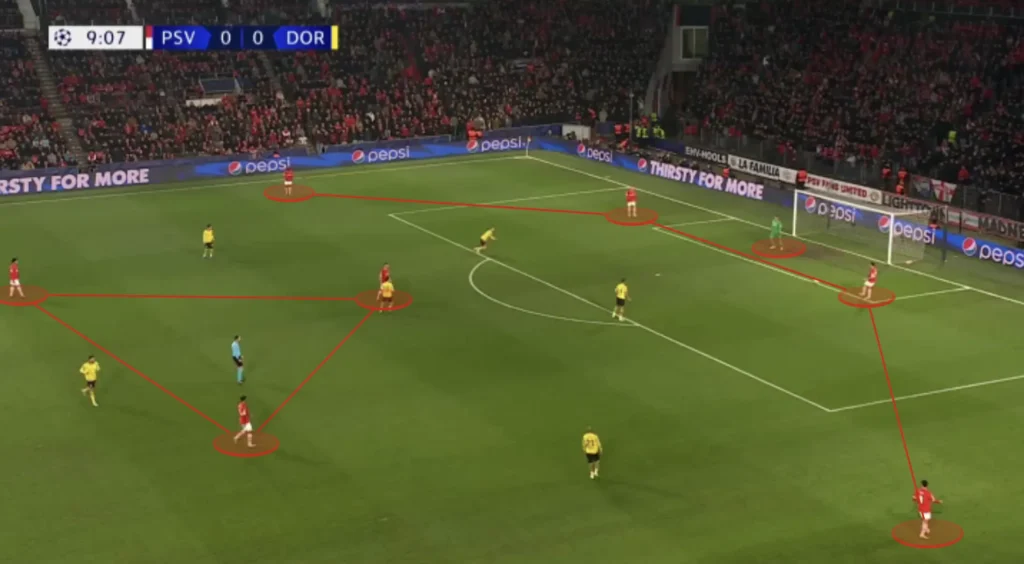
PSV often use fast and vertical long balls in their low build-up. Therefore, they position their attackers centrally, giving them a higher chance of winning the first and second balls.
High Build-up
Peter Bosz sets his team up in a 1-2-3-5 formation in the high build-up, with two center-backs, three holding midfielders, and five up front.
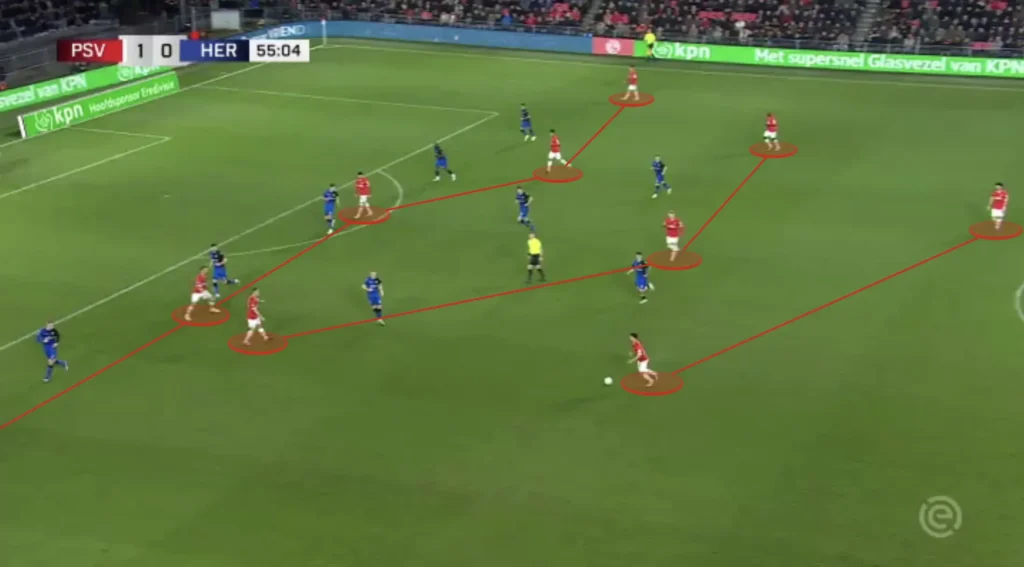
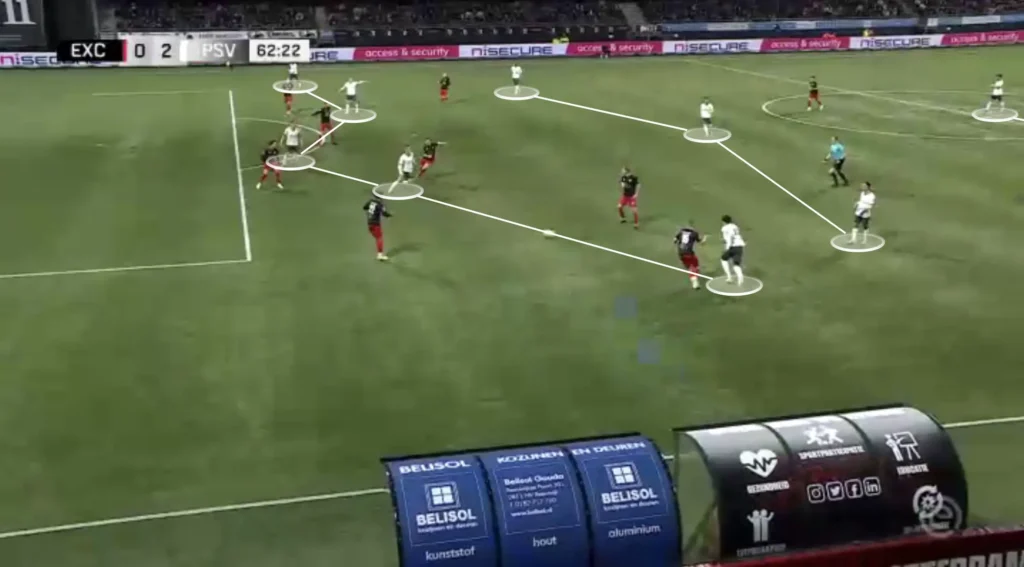
This gives them eight players in the central areas and one on each wing, which creates more options in the center and less space between the players. Bosz likes this because he prioritizes playing through the middle. He needs one player high and wide to pull apart the backline while the rest create numerical advantages in the midfield areas. This builds good conditions in defensive transitions, allowing more players to press when they lose the ball. Another purpose for keeping many players in the middle is to shorten the distance between them. This shortens the length of the passes, which naturally shortens the time between passes. This means the opposition players will have less time to push up and press, giving the PSV players more time and control.
They can get into the 1-2-3-5 formation in a two different ways:
1.) They can push the fullbacks up as wingers, push the wingers in as attacking midfielders, and drop with the number-eights next to the number-six.

2.) They can also invert the fullbacks, positioning them next to the number-six. The wingers will then stay as wingers and the number-eights will push up as the attacking midfielders.

They can also do one rotation on one side and the other one on the other side to get into the 1-2-3-5 formation.

This flexibility allows PSV to be very fluid in their build-up, which often creates confusion for the opposition.
High Backline
A massive aspect of PSV’s high possession build-up is they keep a high backline. This helps in the counter-press because they get closer to the center. Having more players close to the center who can win the ball back makes it difficult for the opposition to do anything when they win possession. Furthermore, the high backline shortens the distance between players, shortening the time and length of the passes and preventing the opposition from pushing up their defense.
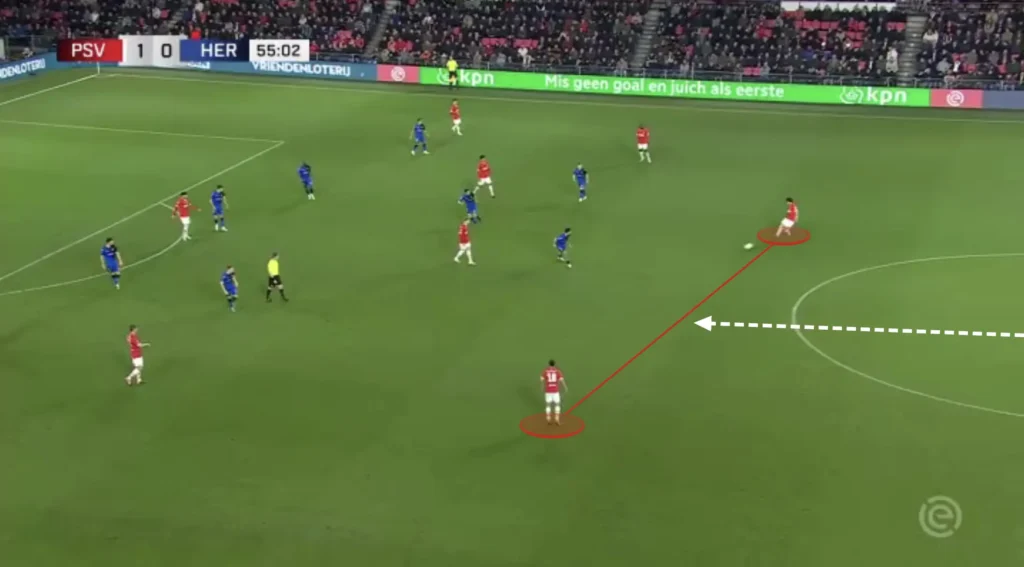
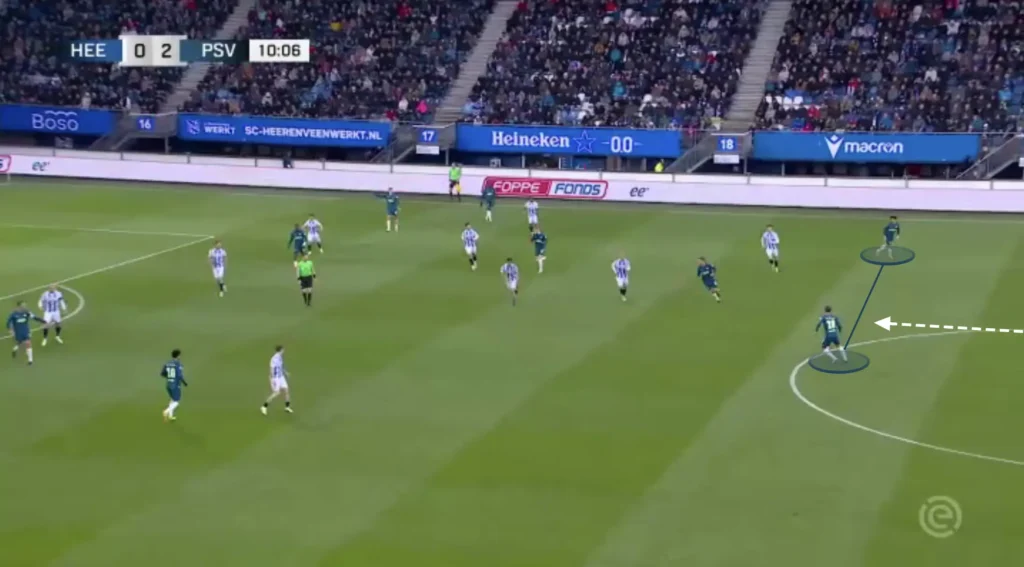
Linking with the Striker
Peter Bosz likes to create central overloads when attacking the opposition. Therefore, the PSV striker, Luuk de Jong, often drops during the build-up. When the striker drops, PSV unlock more ways of beating the opponent’s defense. They can pass the ball to the striker, who can find an attacking midfielder in the pocket or play a one-touch pass out to the winger. If the center-back pushes up on the striker, PSV will exploit the space in behind.
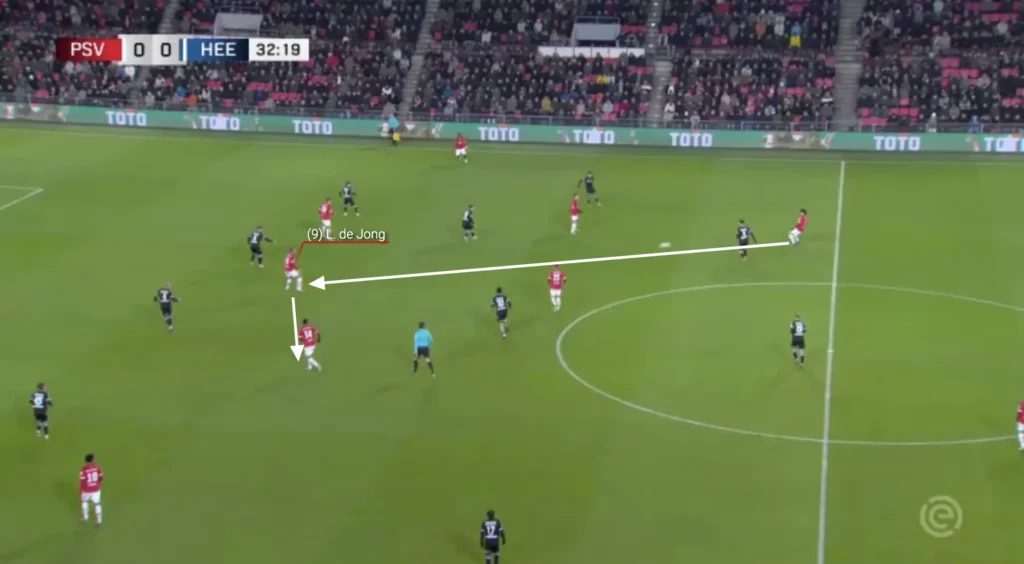
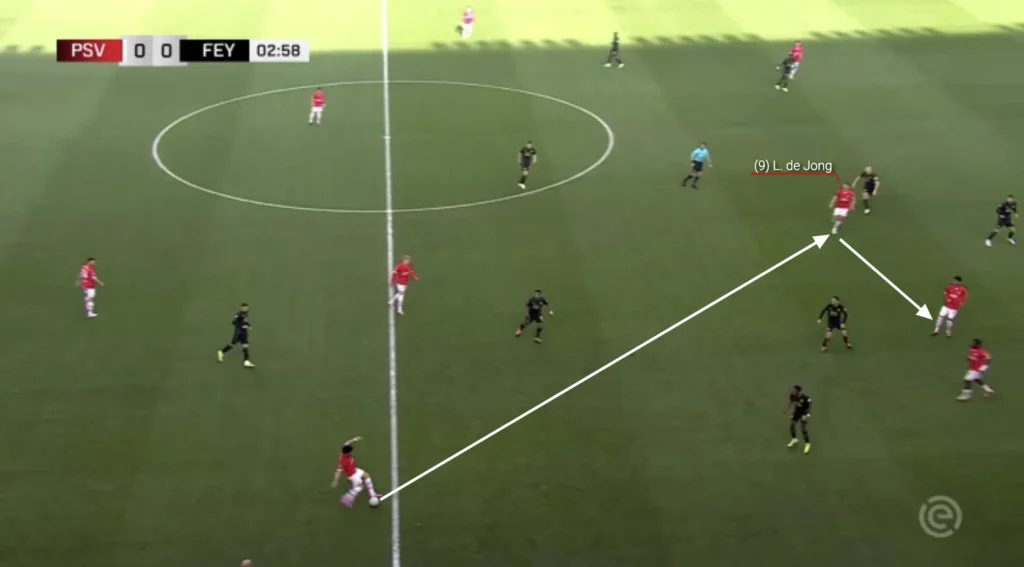
Numerical Advantages
Another massive aspect of PSV’s high build-up is their ability to create numerical advantages against the opposition’s defensive line. Their front five naturally becomes numerically superior against a back four, which they are great at taking advantage of.
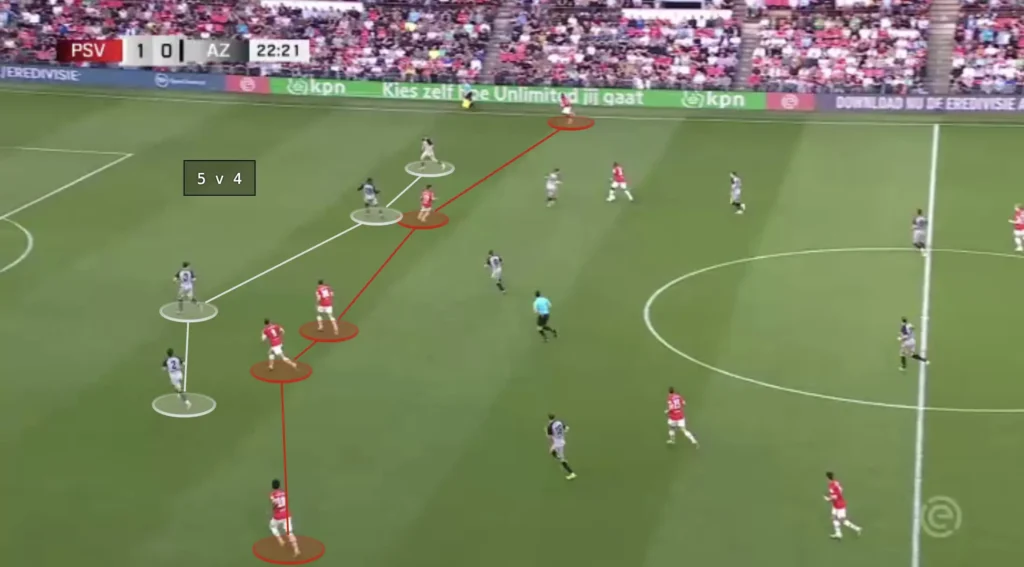
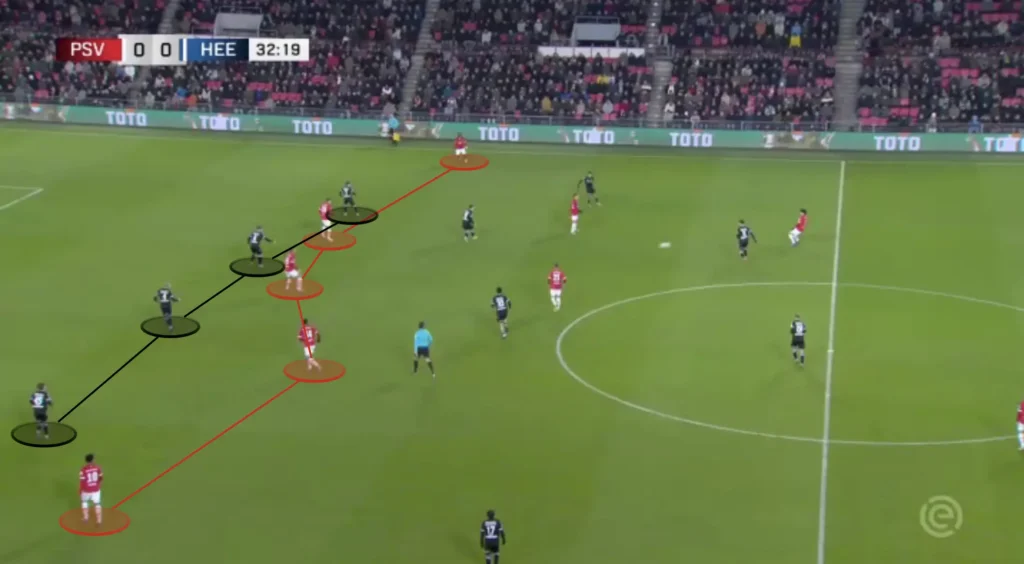
When the defending team is positioned on one side, the weak-side fullback becomes vulnerable to the long switch of play due to the 1v2 against PSV’s winger and attacking midfielder. Bosz’s team often capitalizes on this by getting the ball to the winger and creating many opportunities from 2v1 situations on the wing and in the half-spaces.
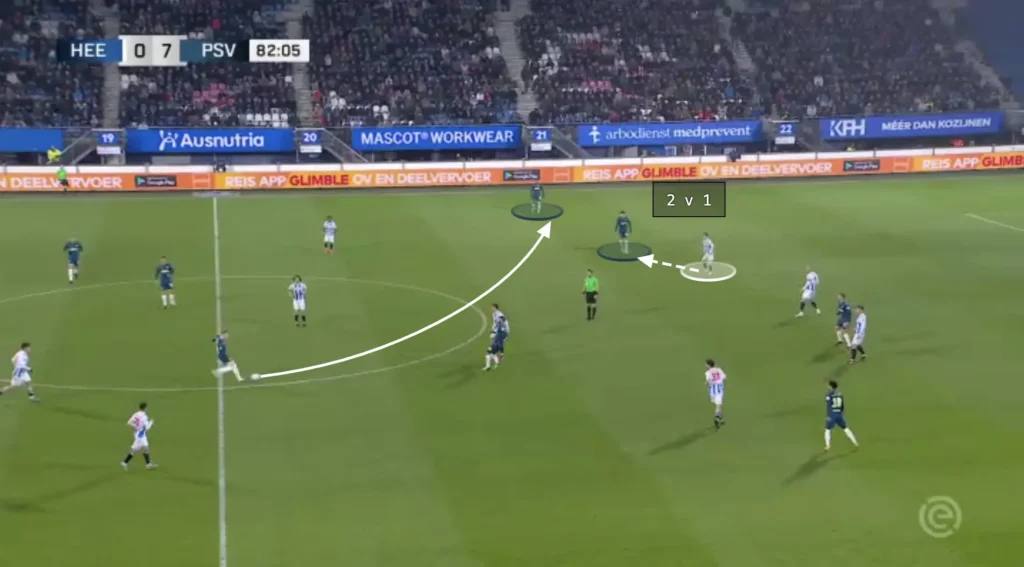
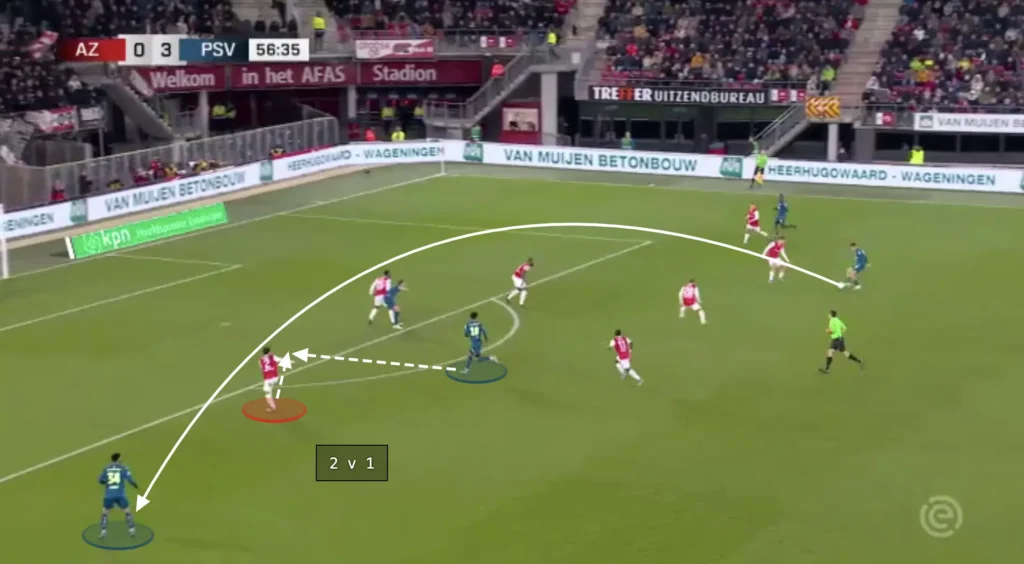
Final Third
Attacking the Half-Space
With 103 goals in 31 league games so far this season, PSV has proven to be a great team in the final third. They always create many chances, mainly by attacking the space between the opposition center-back and fullback. They primarily do this from the wide areas with underlaps from the attacking midfielders or sometimes the holding midfielders.
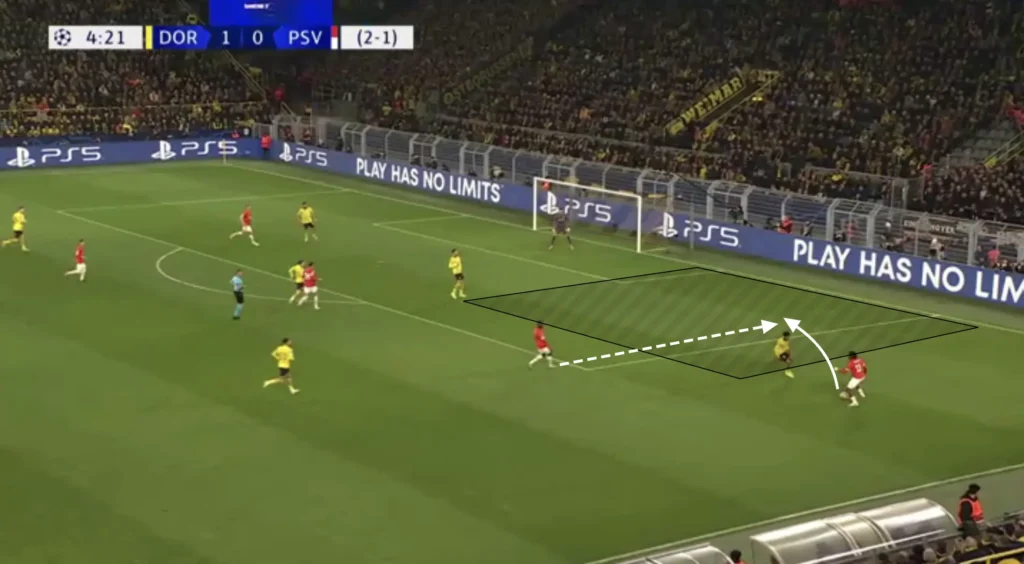
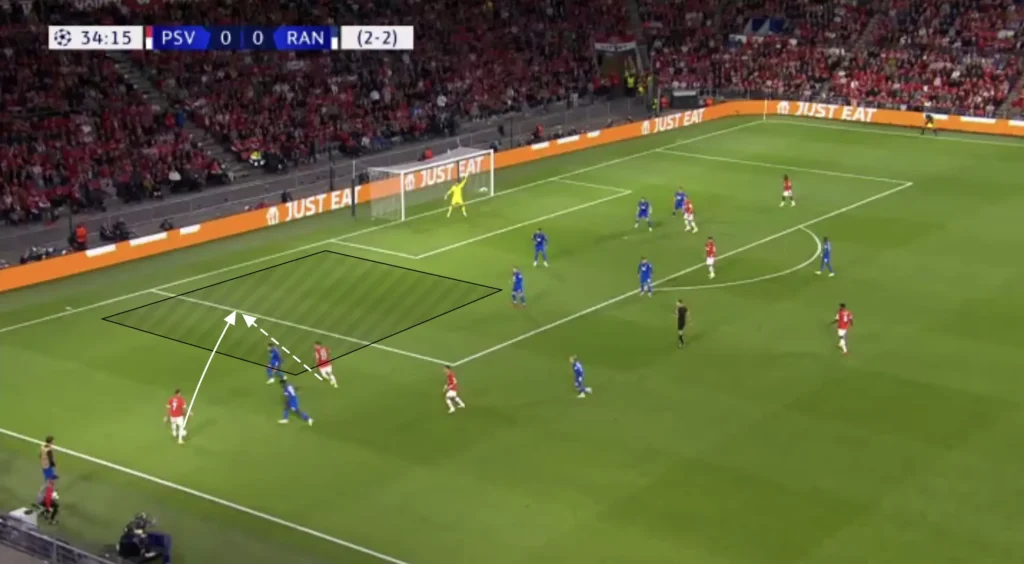
The winger can either play the ball to the underlapping player, who can cross to a teammate in the box, or take the ball inside to combine with an attacker or shoot.
Overlaps
PSV also uses overlaps to produce opportunities in the final third. When the winger gets the ball, a PSV player quickly makes the overlap, creating a 2v1 on the wing. If the opposition fullback drops to cover the overlapping run, the winger could cut inside, taking a shot or combining with a midfielder. If the fullback covers the center, the ball can easily be played to the overlapping player, creating a crossing opportunity.
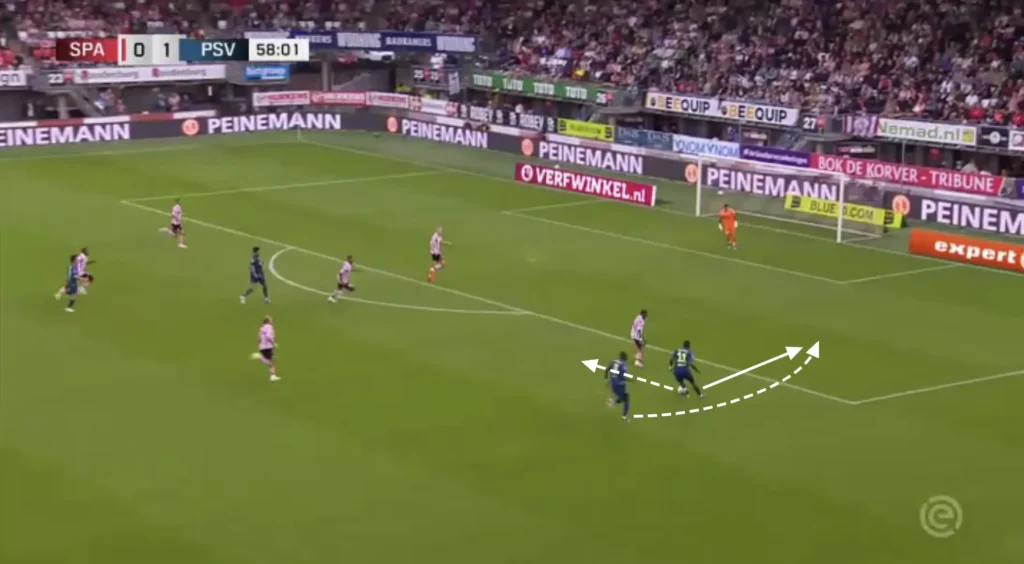
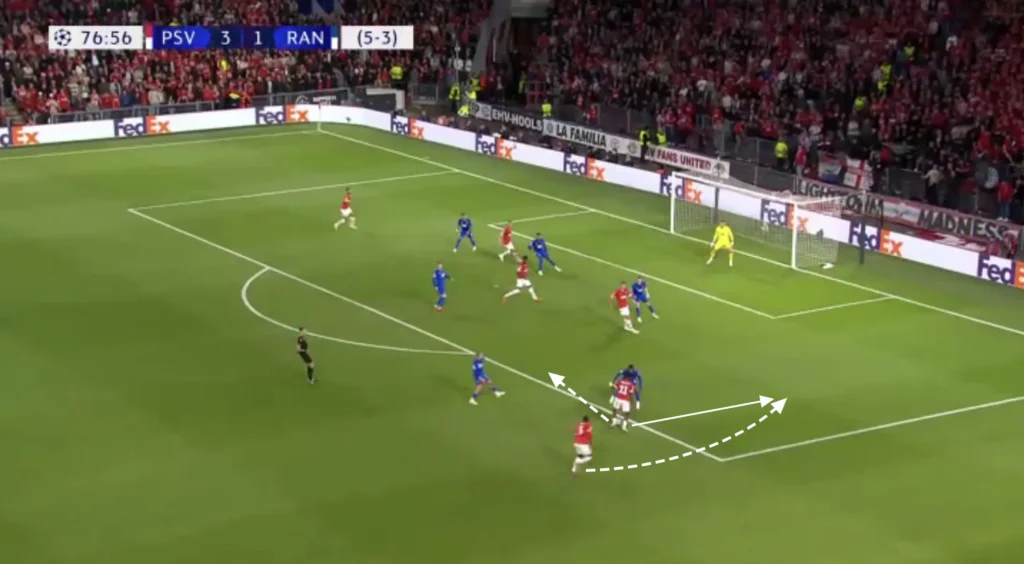
Many Players in the Box
The attacking midfielders and wingers always look to make runs into the box when the ball is in the final third, often getting four or five players into these areas to create overloads. The numerical advantages in the box force the defending team to make decisions and leave some players open.

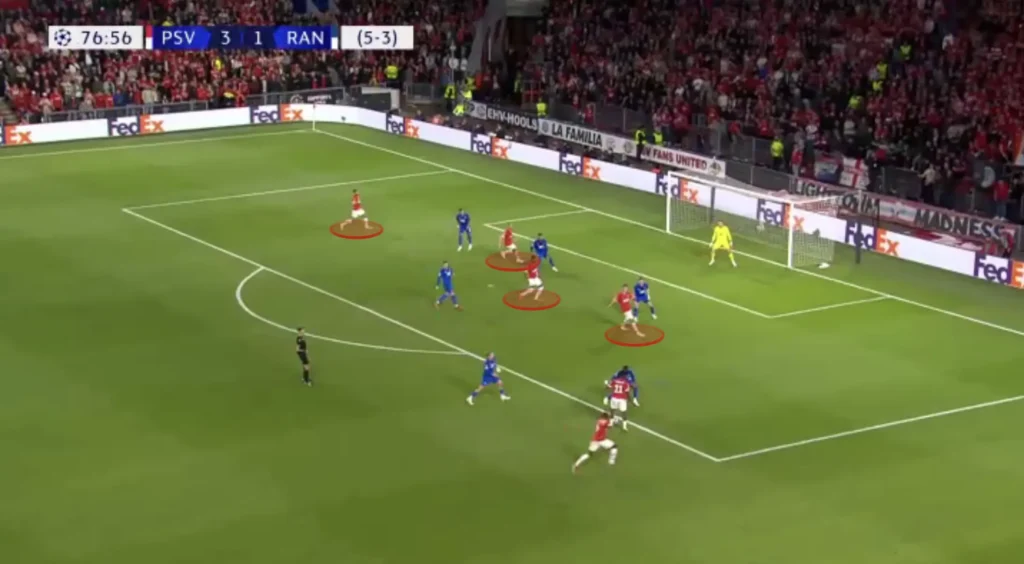
PSV will score many of their goals from crosses to the wingers at the back post. The opposition fullback will often be preoccupied with a PSV attacking midfielder, which leaves massive space at the back post for the winger to attack.

Defending
High Press
Peter Bosz places much value in being aggressive without the ball. This shows in PSV’s high pressure. Bosz usually wants his team to go man-to-man and intensely press the opposition. They almost use their high press as an attacking threat, scoring many goals from winning the ball in their high press.
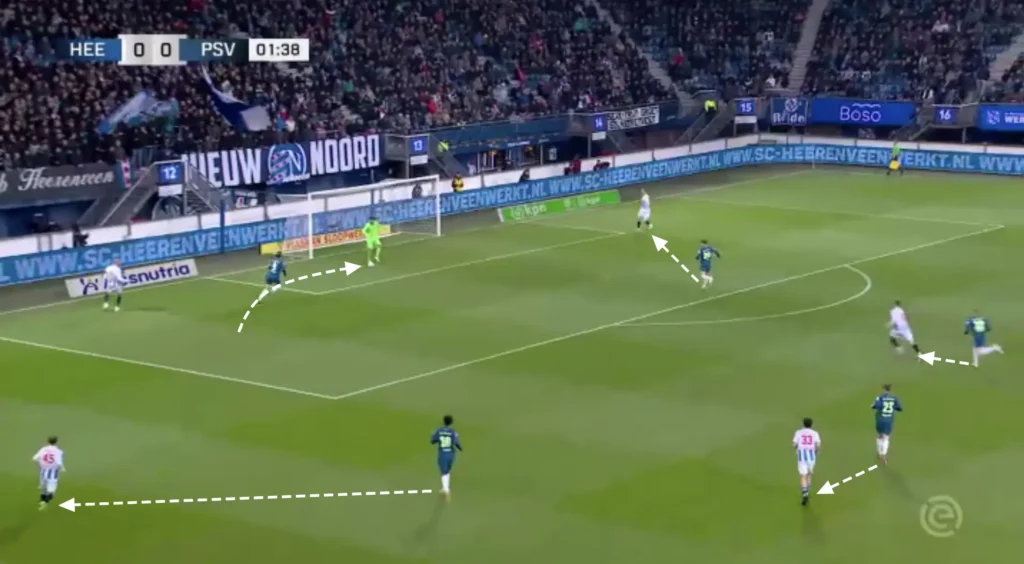
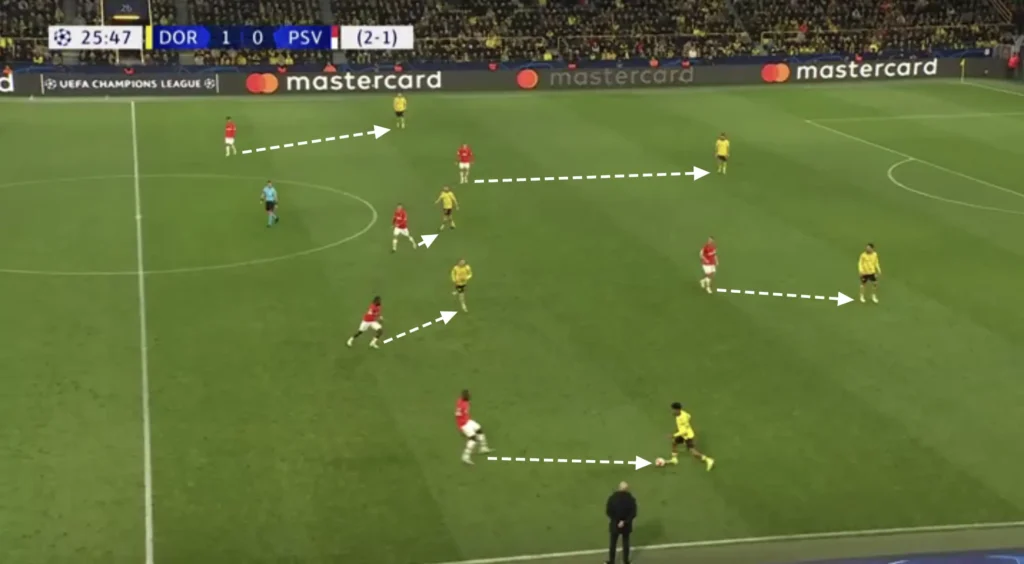
Low Press
In the low press, Bosz’s PSV uses a 1-4-5-1 formation. They look to set up in a mid-block, always trying to close the center, forcing the opposition out wide. Bosz wants his midfielders to man-mark the opposition midfielders and the wingers to follow the opposition fullbacks. This makes their defensive shape very dynamic. Their midfield five adapts to the opponents, often creating asymmetrical shapes and formations.
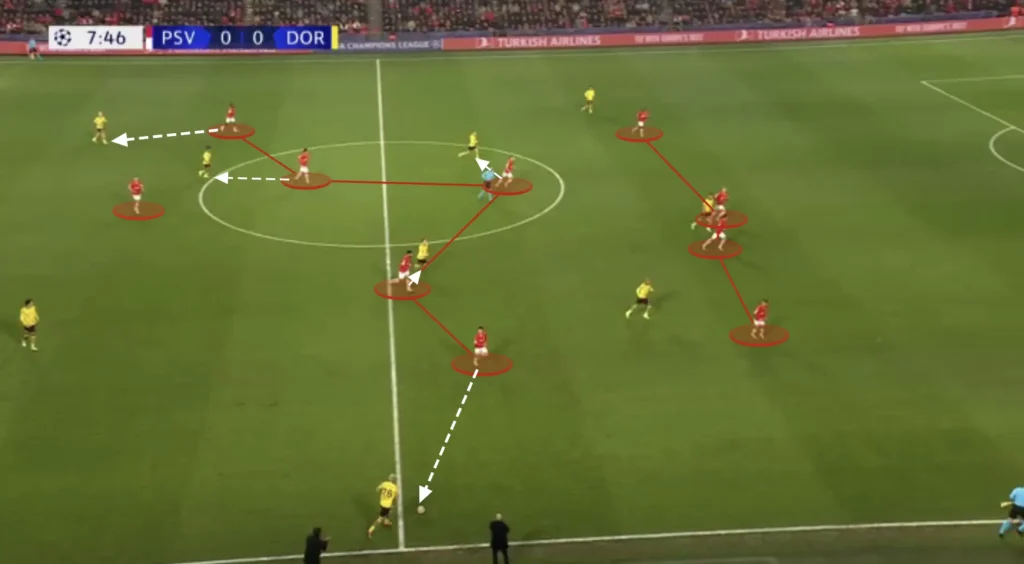
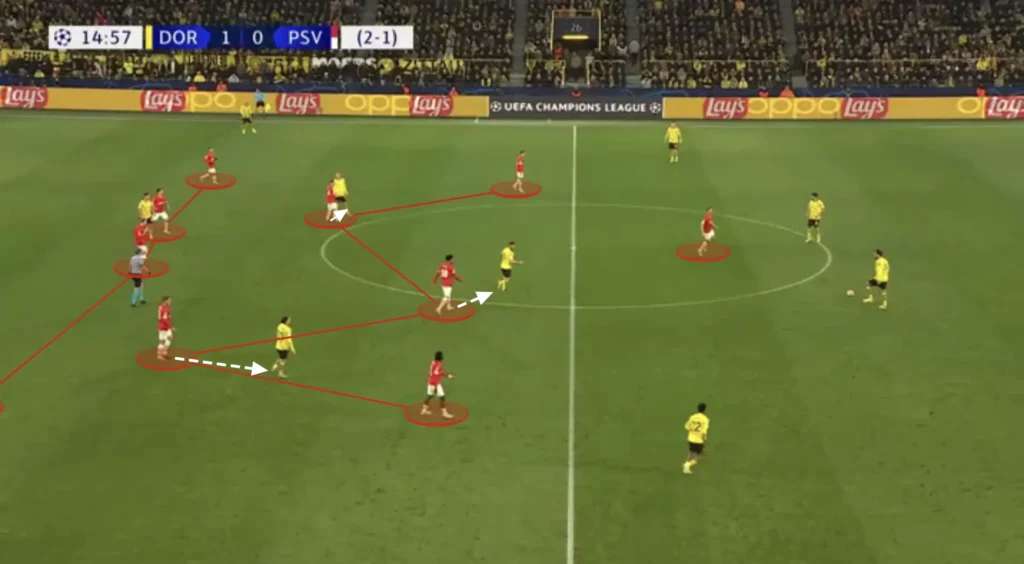
The man-to-man system makes it difficult for the opposition to find free players. However, it can confuse and cause issues for the PSV players when facing fluid teams that often change positions.
Bosz’s PSV also looks to squeeze the pitch when defending. This means constantly pushing the team up as much as possible when defending. Every time the opponent plays a slow, sideways pass or a back pass, PSV’s first line of pressure pushes up, with the rest of the team following to stay compact. When the next pass comes, they push up even more, forcing the opponent back even more. They do this because it pushes the opponent further away from the PSV goal, making it harder to create chances.
Defensive Transitions
Positioning many players centrally, creating a numerical advantage in the midfield, creates good conditions in defensive transitions. Many players close to the ball after losing possession means that many players can work towards regaining possession. Therefore, PSV often successfully regains possession directly after losing it.
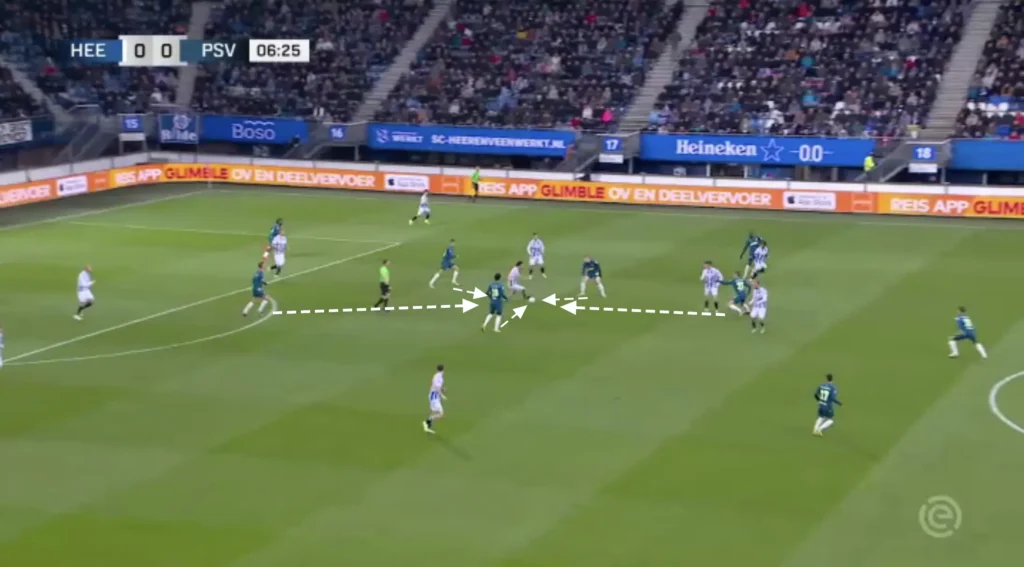
Final Thoughts
In conclusion, this tactical analysis has provided a glimpse into the dynamic strategies implemented by Peter Bosz at PSV Eindhoven. Bosz’s tactical philosophy emphasizes fluid attacking movements, quick transitions, and organized defensive structures, all of which have contributed to PSV’s success on the pitch. Throughout this analysis, we’ve uncovered the intricate details of PSV’s playing style under Bosz, highlighting the team’s strengths and areas for further development. As Bosz continues to refine his approach and mold his team, PSV Eindhoven remains a captivating force in Dutch football, guided by the strategic brilliance of Peter Bosz.




